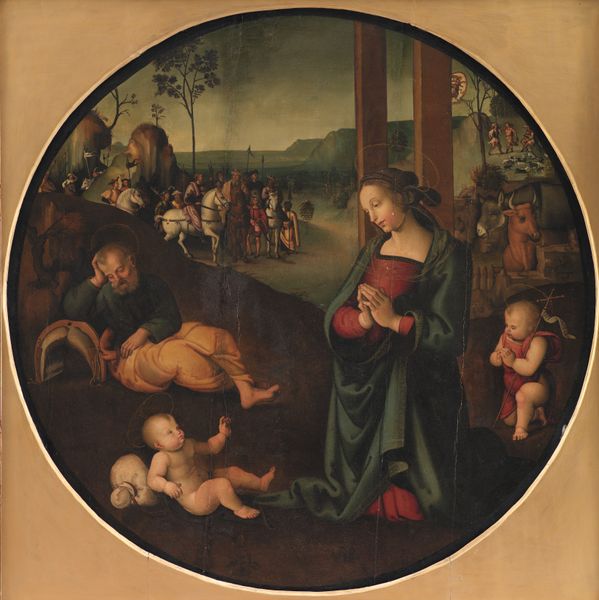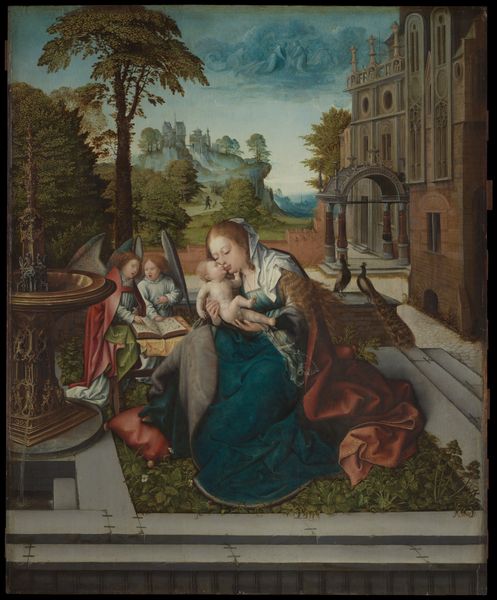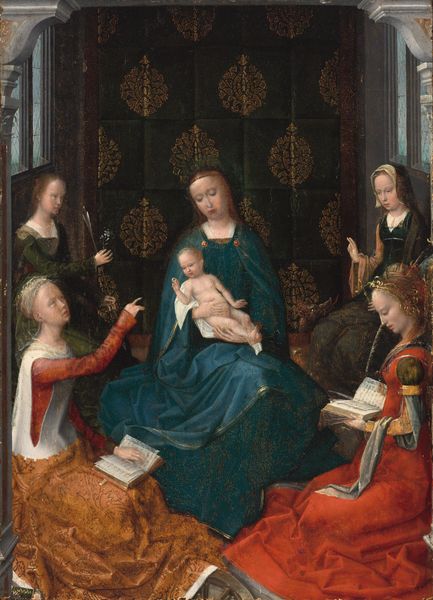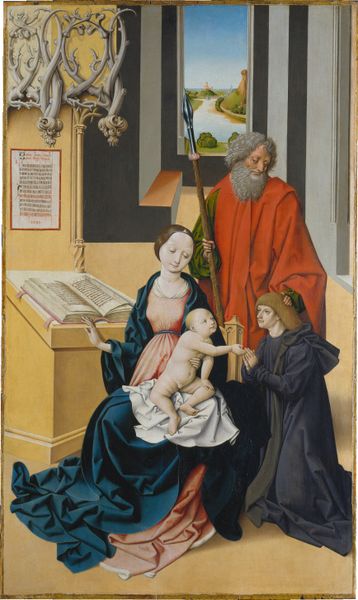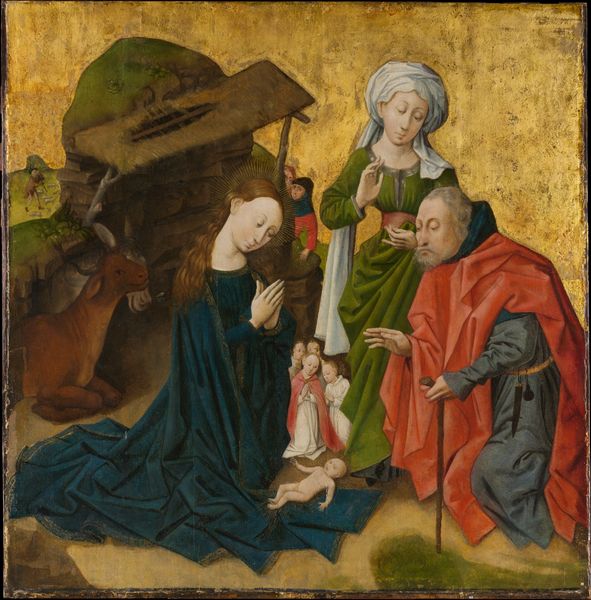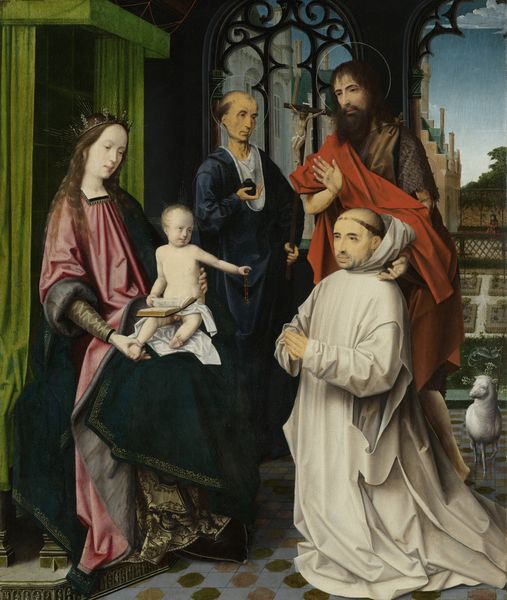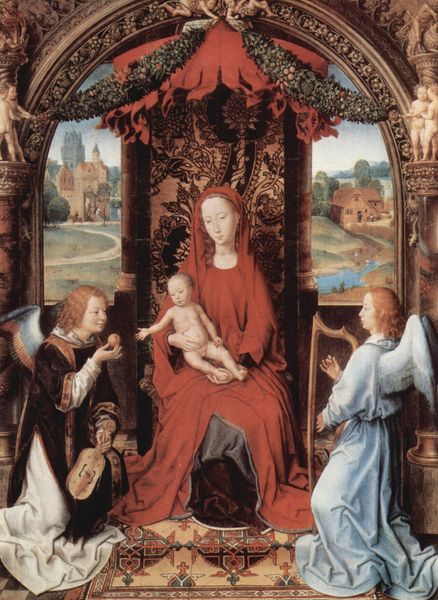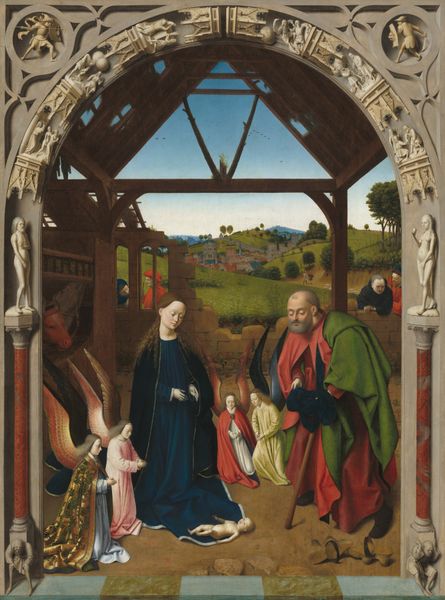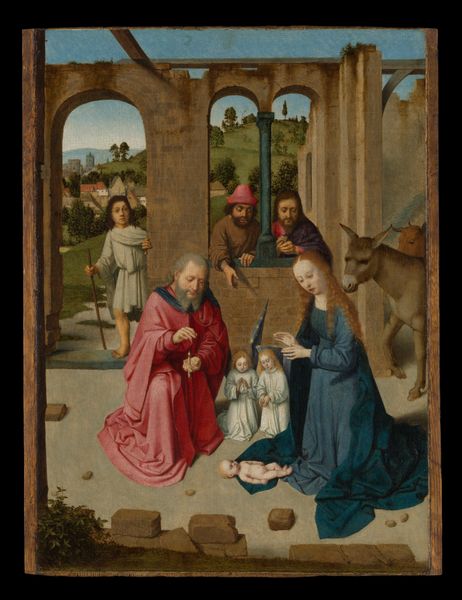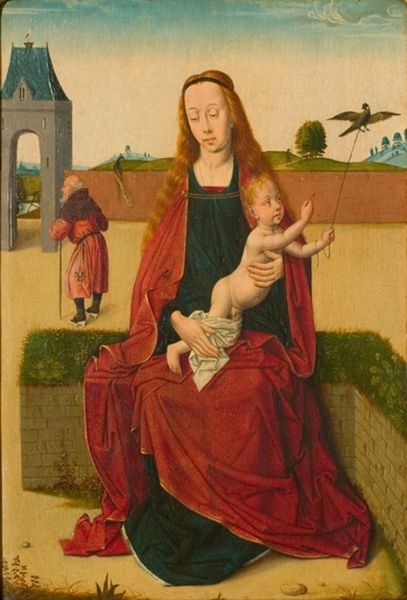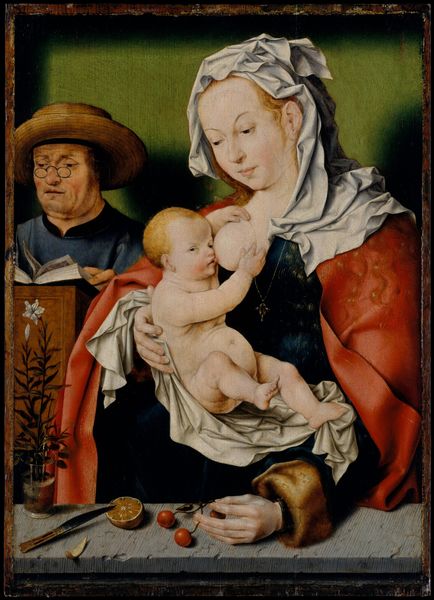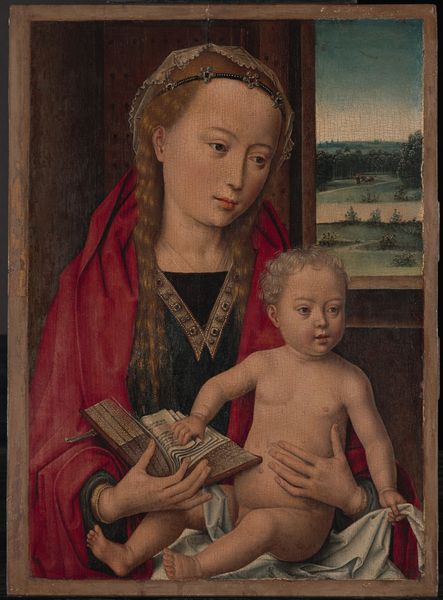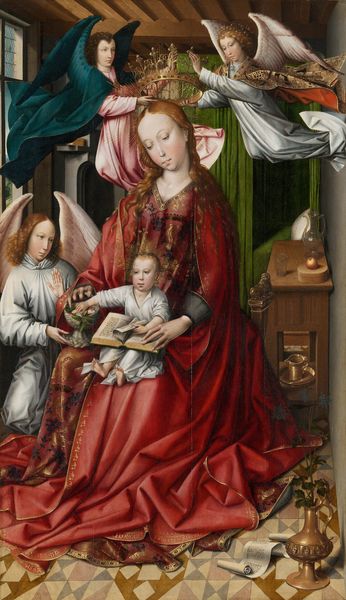
painting, oil-paint
#
painting
#
oil-paint
#
landscape
#
figuration
#
11_renaissance
#
history-painting
#
italian-renaissance
#
early-renaissance
Dimensions: 38.3 x 23.8 x 0.7 cm
Copyright: Public Domain
Curator: This oil painting, currently held in the Städel Museum, presents "The Nativity." While the artist remains anonymous, we can place its creation somewhere between 1500 and 1520, reflecting a moment within the Italian Renaissance. Editor: The first thing that strikes me is the sheer oddness of it all – the stark contrast between the dilapidated stable interior and the bright, almost cheerfully rendered winter landscape seen through the back. Curator: The setting itself does diverge somewhat from the traditional idealized depiction of the Nativity. Consider the Early Renaissance fascination with representing the material world; artists begin placing religious scenes in contemporary, recognizable contexts. The decaying structure could be interpreted as symbolizing the old order giving way to the new. Editor: I find the symbolism compelling. Look at how Mary’s almost child-like features contrast with the weathered faces peering in from the left; or how the bright colors around the holy figures set apart from the more muted tones in the background. What could that say about how society saw itself versus those living beyond their village or town. Curator: Absolutely. There’s a political element at play here. The composition also subtly underscores the power structures of the day, both social and spiritual. Consider the institutional framework supporting such depictions and their role in shaping popular piety. The museum’s role, centuries later, continues this shaping of public perception. Editor: That leads me back to those outside figures – on the left, seemingly townspeople; on the right, wanderers in a snowy wasteland. What cultural scripts informed this painting? Early Renaissance art sought to locate divinity within the human experience, to connect with it on both a symbolic and personal level, right? Curator: Precisely. By grounding a pivotal biblical narrative in what appears as relatable, observable conditions, "The Nativity" fostered, and still fosters, an empathetic bridge to religious narratives and those in positions of social power. The work becomes, then, an important artifact for understanding the construction and promotion of power structures inherent to 16th-century society. Editor: And still resonating today... I find myself connecting, dissecting it based on today’s context. Curator: Yes, and hopefully, viewers continue engaging, questioning, and reinterpreting it. The beauty of art lies, in part, in its dynamism as a carrier of ever-evolving cultural memory.
Comments
No comments
Be the first to comment and join the conversation on the ultimate creative platform.
